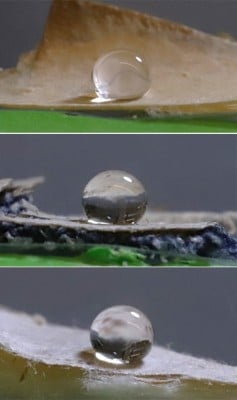Researchers at the American Chemical Society (ACS) have discovered a groundbreaking method to create waterproof materials using edible fungus. This innovation, reported in the journal Langmuir, offers a sustainable alternative to traditional plastic coatings found in single-use items such as paper cups and food wraps.
The new technique combines edible fungi with wood fibers to form a protective layer that effectively blocks water, oil, and grease. This advancement addresses growing environmental concerns associated with single-use plastics and other non-biodegradable materials.
Environmental Benefits of Fungus-Based Coatings
The use of edible fungus in material production could significantly reduce reliance on harmful plastic products. According to the ACS report, the waterproof layer created from this natural resource not only enhances the durability of paper and fabric but also maintains the eco-friendly attributes of the materials used.
This innovative approach aligns with global efforts to find sustainable solutions to plastic waste. The researchers emphasize that utilizing renewable resources like fungi can lead to more environmentally responsible manufacturing processes. The potential for this technology could redefine how industries approach packaging and textile production.
Technical Insights and Future Applications
The specific application of edible fungi in creating waterproof coatings presents numerous possibilities for various industries. The research demonstrates that the fungus can be integrated into existing production methods without significant alterations to current manufacturing processes.
This discovery opens the door to numerous applications, including food packaging and clothing that require moisture resistance. With the growing demand for sustainable materials, the findings from the ACS could lead to widespread adoption of fungus-based coatings in diverse markets.
The researchers’ work highlights the importance of interdisciplinary collaboration in addressing environmental challenges. As industries increasingly seek to reduce their carbon footprint and embrace sustainable practices, innovations like this one are vital to fostering a more sustainable future.
In summary, the development of waterproof materials from edible fungi not only presents a practical solution to the plastic problem but also signifies a step forward in sustainable materials science. As the research progresses, the potential for real-world applications continues to expand, promising a greener approach to everyday products.







